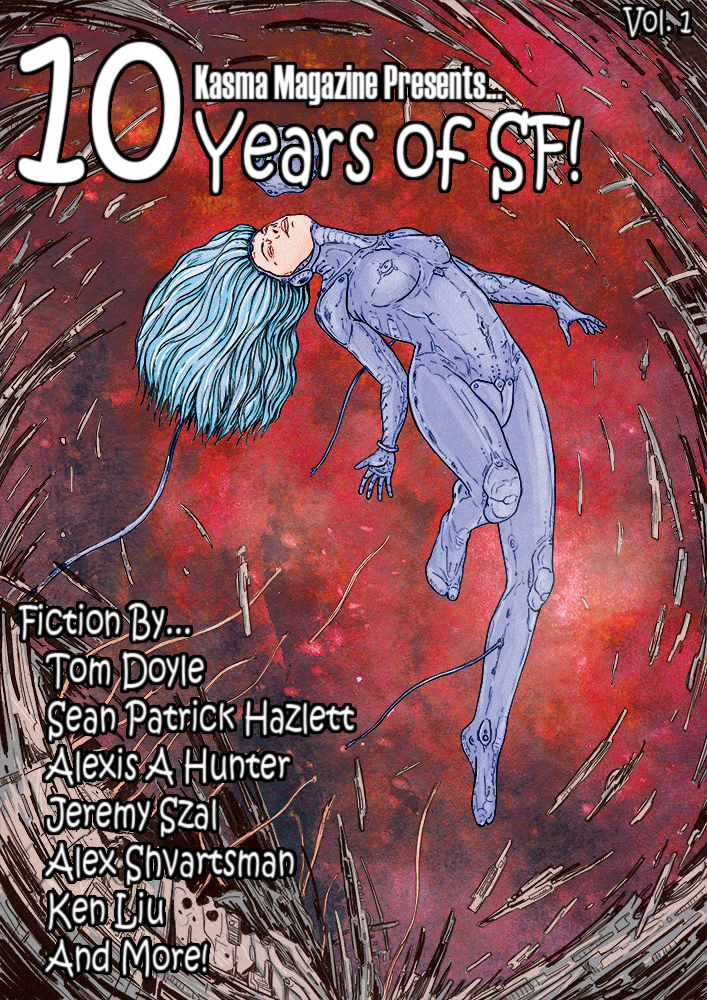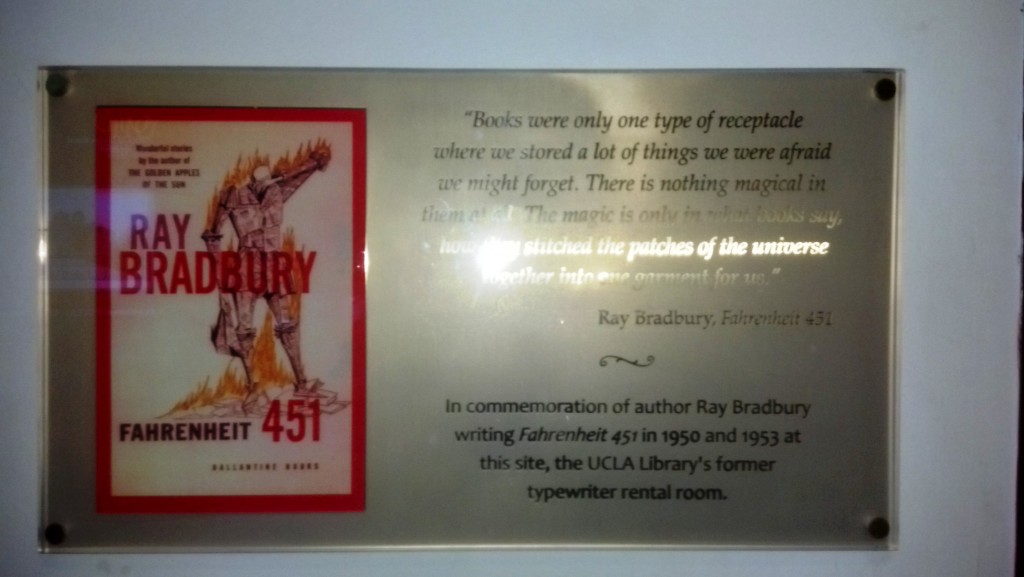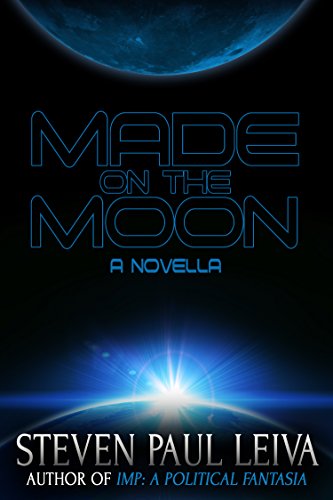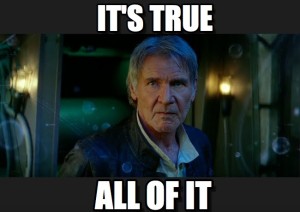(1) SF IN NYT. Amal El-Mohtar’s latest Otherworldly book review column for the New York Times covers “Princesses, Priestesses and Time Travel: What’s New in Science Fiction and Fantasy”
What does it mean to retell a story? Does it mean dressing up a familiar tale in different clothes? Reading it against its grain? Replacing parts of a story like boards in a ship, until an old story’s shape is built of entirely new wood? This month, I’m looking at recent books that are all retellings of one sort or another.
(2) EDITORS YOU RECOGNIZE. Amber Troska pays tribute to two editors in “Shaping the Speculative Fiction World: Ellen Datlow and Terri Windling”.
It is difficult to overestimate the tremendous value of editors. The contributions that authors make to their respective fields, and their impact on the readers that encounter their work, can’t be overstated either, of course—but it is equally important to remember that no truly great author goes it alone; there are always strong editors behind the scenes, shaping the individual stories themselves as well as the publishing world at large. The Hugo Awards are named for an editor, after all.
Yet I can count most of the editors I recognize by name on one hand. Even with such a limited group to choose from, only two have had an extremely significant, identifiable impact on me as a reader: Terri Windling and Ellen Datlow. I could never hope to cover everything the two have contributed to the publishing world—their careers have stretched too far and are too varied and far-reaching for me to do them full justice. However, there are several projects that are worth looking at in order to appreciate their impact and get a sense of how influential their work has been, and continues to be.
(3) AFRICAN SF EDITORS. From The Minnesota Review: “Editor Interview: Mazi Chiagozie Fred Nwonwu and Chinelo Onwualu of Omenana”.
Mazi Chiagozie Fred Nwonwu and Chinelo Onwualu are co-founders and editors of Omenana, a web-based literary magazine dedicated to publishing speculative/sci-fi/fantasy fiction by African writers. In this interview with Uche Okonkwo, Mazi Chiagozie and Chinelo talk African speculative fiction, life lessons, and writing and publishing as a labour of love.
UCHE OKONKWO: This idea that Africans don’t write sci-fi/fantasy/speculative fiction is, I believe, part of the reason you started Omenana. Where do you suppose this idea comes/came from and why did/does it persist?
MAZI CHIAGOZIE: I think it comes from that general misconception that Africa is a backward place that hasn’t played any notable role in man’s journey to the stars. So even Africans look at Africa as this place whose people only concern themselves with war, famine, dancing, and procreation. It’s a view that has been propagated for a long time and has now come to offer a copout for people who don’t want to do the work needed to unravel the complexity that is Africa and her varied nations and peoples. We are doing our bit to change the perception, but it continues to persist. And with Wakanda being a fictional place, will continue to persist.
CHINELO ONWUALU: I think the idea that Africans don’t write speculative fiction is born out of the rather racist definitions that limit what speculative fiction is to the sorts of things written by white men in North America and Europe. Thus, when Africans write speculatively, it’s often dismissed as folklore or fable telling.
I feel many of us have adopted this same attitude as part of the deep-seeded practicality that is common with a lot of oppressed groups. Because our systems are so broken – often by colonialist design – we don’t see a lot of value in imaginative endeavours that might divert our energies from the struggle for daily survival. Combined with the devaluation of cultural artefacts like our stories, traditions and beliefs, many of us end up dismissing creative pursuits as wastes of time.
(4) ONCE LESS IN THE BREACH DEAR FRIENDS. David Langford tells about a program Terry Pratchett asked him to write in “The Silicon Critic” at the Milford SF Writers blog
Milford participants often have distinctive personal crotchets when commenting on stories, and John Brunner’s (as I remember from the 1980s) was a particular sensitivity to repetition. Sometimes it seemed that the unintended re-use of a significant word too soon after its last appearance pained him more than a gaping plot hole. The “deliberate repetition for effect” card could be played only so often, especially if you hadn’t noticed the repetition of “repetition” and the fact that it’s now appeared four times in one paragraph.
Terry Pratchett was another author who worried about such things. In 1998 he invited me to write a little Windows application to monitor his own use of favourite words. This, he stipulated, was to be named Bicarb because the idea was to stop you repeating….
(5) ANOTHER ONE BITES THE DUST. The Hollywood Reporter picked up the con’s Twitter announcements: “Universal FanCon Suddenly Postponed a Week Before Event”
The Baltimore convention created to celebrate diversity has not been rescheduled.
A week out from its announced debut, organizers have confirmed that Universal Fan Con, the new convention created to celebrate diversity and inclusivity in fandom, will not take place and has been postponed to an as-yet unspecified date.
In a series of tweets, organizers said that they were “devastated to make this postponement decision,” and shared that there is a “contingency plan” for those whose travel to Baltimore next week was already booked and are unable to reschedule their trip.
Although no official reason has yet been given for the sudden postponement — social media accounts for the event were promoting the show as recently as yesterday — a source told Heat Vision that the event “has a financial deficit.” In January, Heat Vision talked to Universal FanCon executive director Robert Butler, who said that the Kickstarter campaign to fund the show had been “a greater success than we could have imagined,” raising twice the amount initially asked for….
One committee member announced her resignation:
https://twitter.com/beauty_jackson/status/987362975253192705
https://twitter.com/beauty_jackson/status/987418823375585282
One dealer publicized how the cancellation is affecting him financially – start the thread here.
https://twitter.com/itsedwilliams/status/987451963720851456
The con committee now has posted a FAQ on their website: http://www.universalfancon.com/. They claim the con will be held at a later date.
Why are you postponing FanCon?
Currently we are in a financial deficit that will not allow us to operate the convention within budget. Accordingly, we have made the decision to postpone and reschedule FanCon so we can put forward the type of event our fans deserve.
Why did you wait so long to postpone the event?
The FanCon team worked really hard up to the last minute to put forward an amazing event. However, it became clear in our last team meeting that we would not be able to deliver the event the fans deserved without more time.
How long will the event be postponed?
Once we are able to fully assess our options, we will make an announcement.
(6) ANDERSON OBIT. Harry Anderson (1952-2018): US actor and writer, died April 16, aged 65. Genre roles include Tales from the Darkside (one episode, 1985), Mother Goose Rock ‘n’ Rhyme (1990), Tales from the Crypt (one episode, 1990), It (1990), Harvey (1996), Lois & Clark (one episode, 1997), Nightmare Ned (voice for video game, 1997), Noddy (one episode, 1998). He also wrote one 1992 episode of Tales from the Crypt.
(7) TODAY’S BIRTHDAY BOYS
- Born April 20, 1937 – George Takei
- Born April 20, 1939 – Peter S. Beagle
- Born April 20, 1964 – Andy Serkis
(8) COMICS SECTION.
- Lise Andreasen discovered it’s not all play time when you’re a werewolf.
The mundane life of a lycanthrope. @phoenixcomicuk pic.twitter.com/oXvmCgYmMA
— Jess Bradley (@VenkmanProject) April 20, 2018
(9) EATING THE FANTASTIC. Scott Edelman hopes you will “Share spring rolls with Stoker Award-winning author Elizabeth Massie” in Episode 64 of his Eating the Fantastic podcast.
It’s time to head to Providence, Rhode Island for the final episode of Eating the Fantastic recorded during this year’s StokerCon, following my Italian lunch with Paul Di Filippo and a Portuguese dinner with Victor LaValle.
This episode I wandered off with one of the con’s Guests of Honor, Elizabeth Massie, for lunch at Apsara, a restaurant which serves up Cambodian, Thai, Vietnamese, and Chinese cuisine. Massie made her first professional fiction sale 35 years ago, and since then has won two Bram Stoker Awards for the critically acclaimed novels and short stories which followed.
We discussed why Bionic Woman Lindsay Wagner is the one to thank for her Stoker Award-winning first novel Sineater, how reading Robert Bloch’s Psycho at a young age was like a knife to her heart, which episode of Twilight Zone scared the crap out of her, why you’ll probably never get to read her Millennium and Law & Order novels, her nearly impossible task of writing one spooky book for each of the 50 states in the U.S, why Kolchak: The Night Stalker was her favorite franchise to play in, the great-great grandfather who cut off his own head with a homemade guillotine, which Dark Shadows secret was only revealed in her tie-in novel, and much more.
(10) NO B5. “J. Michael Straczynski Says With Current Warner Bros. Execs, Babylon 5 Never Going to Happen” – Bleeding Cool has the story:
During an extended series of tweets on Thursday evening, Babylon 5 creator J. Michael Straczynski expressed at length that the award winning science fiction series’ current television rights holder Warner Bros. has no intention of either doing anything with the license themselves, or of letting anyone else do anything with it….
They won't sell. Because if it were to do well elsewhere, it would embarrass them. And studios don't let out IP. So they're like a monkey with its fist around a nut in a jar, it can't pull it out and it won't let go. https://t.co/04wyxk5rCd
— J. Michael Straczynski (@straczynski) April 20, 2018
(11) HELP WANTED. Hugo nominee nerds of a feather has put out a call: “New Contributors Wanted: 2018”.
Who we’re looking for: we are looking for people who (1) write well and don’t need extensive copyediting, (b) appreciate our brand of humor, (c) understand and are ready to abide by our established format and scoring system and (d) are otherwise good fits with our voice and style. We are not, however, looking for automatons who agree with the rest of us on anything and everything.
We would also like to note that one of our goals is to feature a diverse range of voices on the topics that matter to us. As such, we encourage writers of all backgrounds to apply.
Caveat: we know lots of you have awesome projects you want everyone to know about, but since these are regular contributor positions, we would like to emphasize that this would not be an appropriate forum to use for promoting that awesomeness (aside from your blogging awesomeness, of course).
(12) WHAT’S THAT SMELL? Here’s a no good very bad article for everyone to disagree with: Olivia Ovenden asks “What’s Going Wrong With Sci-Fi?” at Esquire.
“One of the problems with science fiction,” said Ridley Scott back in 2012 ahead of the release of Prometheus, “is the fact that everything is used up. Every type of spacesuit, every type of spacecraft is vaguely familiar. The corridors are similar, the planets are similar. So what you try to do is lean more heavily on the story and the characters.”
Great science fiction has always done just that. So why have a recent string of releases shown less interest in the story than the spaceships? Is sci-fi a genre in trouble?
(13) PUNCH BROTHERS, PUNCH WITH CARE. Declan Finn says his personal solution would be what Asimov described as “the last resort of the incompetent” — “The John Ringo and ConCarolinas issue”.
I’ve been scratching my head for a while about whether or not I was going to do a blog post for the whole ConCarolinas debacle.
To be honest, I’d never heard of them until this fashla happened. So they made a great first impression on me.
So much so that they convinced to never attend their convention, as a guest or even as just an attendee.
And no, it’s not necessarily “Oh, look what they did to Ringo.”
I am doing something radical. I will take them ENTIRELY AT THEIR WORD that they can’t guarantee the safety of one of their own guests against the angry hordes of Social Justice Zombies.
On THEIR OWN TERMS, I should be concerned to even walk the halls as a regular attendee carrying a John Ringo book. While I have no problem defending myself, I to go conventions to have a good time. I don’t want to spend the majority of the con in cuffs because some dickheads decide “You’re a Ringo fan, therefore you’re [insert cliche lefty insults here]” and therefore I have to beat them senseless.
(14) ERASURE. Sarah A. Hoyt rehashed Sad Puppy history in “Of Conservatives And Conventions” [Internet Archive link] at PJ Media.
…I went over to John Ringo’s page and read about it. As far as I could tell, a bunch of people on Twitter had been badgering both the con-committee and the other (very leftist) guest about inviting someone who was… what the heck was he? I don’t know.
In the beginning, the accusation against him was that he was “Puppy Adjacent.”
For those of you wanting to follow this at home, the score card is this: Five years ago, my friend Larry Correia started a movement called Sad Puppies, which was a half joking attempt to get books not of solid leftist bent (not even right wing, just not preachy left) nominated for the Hugo, which used to be one of the most prestigious fan awards in science fiction.
When Larry tired of the game after two years, my friend Brad Torgersen took it over…
Vox Day was a little offended to find that he and the Rabid Puppies have been erased from Hoyt’s version of history — “SJWs in SF: Sad Puppy version” [Internet Archive link.]
I find this rather fascinating for what it omits. The Baen cum Sad Puppies crowd is in an uncomfortable position not terribly different from that of Never Trump and the cuckservatives. They are accustomed to being the sole opposition to the SJWs in science fiction, and viewing themselves as the proper and respectable opposition, so they really don’t know what to do about the Rabid Puppies or the considerably less accommodating opposition that is now represented by Castalia House, Arkhaven, and Dark Legion. Nor do they understand how various trends favor the growth of our influence, in part at their expense.
So, they push a narrative to the public in which we don’t exist, even though without us, Sad Puppies would have remained what it was prior to our involvement, a minor bump in the road that didn’t even require any suppression outside of the usual routine. This is not to say that what they did was not admirable, and indeed, their construction of the Dragon Awards will likely prove to be more significant in the long run than our demolition of the Hugo Awards. I merely observe that their efforts would have been insufficient in our absence.
But unlike the SJW narrative, the Sad Puppy narrative does not harm us at all. I am content to let them push it in peace; after all, they are not the enemy. Right now, we are marshaling our forces and preparing to engage in offensives on multiple fronts, some of which are known and others which will prove to be unexpected….
Let the others trail in our wake at their own pace. As long as they refrain from either attacking us or getting in our way, they are not part of the problem. They are trying to be part of the solution, even if they go about it in different and suboptimal ways.
[Hat tip to Camestros Felapton.]
(15) VIDEO OF THE DAY. in Stems, Scottish animator Ainslie Henderson shows how he takes found objects and turns them into stop-motion animation.
[Thanks to John King Tarpinian, ULTRAGOTHA, Steve Green, JJ, Cat Eldridge, Martin Morse Wooster, Chip Hitchcock, Mark Hepworth, Andrew Porter, Lise Andreasen, and Carl Slaughter for some of these stories. Title credit belongs to File 770 contributing editor of the day Ky.]





















